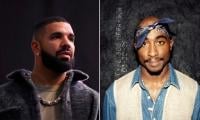LONDON: Private firms which refurbished Grenfell Tower have refused to admit any responsibility for the catastrophic fire which killed 72 people, despite experts saying the work failed to meet building regulations, an inquiry has heard.
The second phase of the investigation into the disaster opened on Monday, and the inquiry’s chief lawyer accused corporate companies of pointing the finger at each other without accepting any blame.
Built in 1974, the tower was extensively refurbished between 2012 and 2016, most significantly when flammable aluminium composite material (ACM) cladding was wrapped over its concrete exterior. The first part of the inquiry found this was the “principal” reason for the rapid spread of flames.
Counsel to the inquiry Richard Millett QC said in his opening remarks: “With the sole exception of RBKC (Royal Borough of Kensington and Chelsea) not a single core participant involved in the primary refurbishment of Grenfell Tower has felt able to make an unqualified submission against their own interests.”
Headded: “All core participants who played a material part in Grenfell Tower have laid out a detailed case that it relied on others and how in no way was the work it did either substandard or non-compliant (with building regulations). In every case, what happened was, as each of them would have it, someone else’s fault.”
The second stage of the inquiry will consider how the high-rise block came to be covered in flammable cladding.
Lead refurbishment architects Studio E said it “did not have any knowledge that the products used on the tower were unsafe” and said product manufacturers had “produced materials and testing data which had the effect of misleading designers to consider that their products were safe”.
In a statement to the inquiry it said: “Studio E considers that it acted as would be expected as a reasonably competent architect in its position” and called itself a “conscientious, ethical and responsible” firm.
Rydon, the main contractor, said the providers of the cladding and insulation, Arconic and Celotex, had misled buyers into believing their products were safe for use on high-rises despite appearing to know of the dangers.
An internal report from an Arconic director in 2011 noted the material Reynobond PE was “dangerous on facades and everything should be transferred to (FR) fire resistant as a matter of urgency”, according to counsel for Rydon Marcus Taverner QC.The email, sent by official Claude Wehrle, added: “This opinion is technical and anti-commercial it seems.”
Taverner also read out an internal Celotex email from November 2013 which showed officials knew using the insulation CelotexRS500 alongside aluminium composite material (ACM) cladding could be dangerous. The company marketed its insulation as being suitable for buildings taller than 18 metres after it decided to get into the “lucrative” high-rise market in 2013, Taverner said.
The second phase of the inquiry began at a new venue in Paddington, west London, with a small number of demonstrators playing drums and music outside. It comes after a member of the inquiry panel resigned after she was linked to a charitable arm of the firm which supplied the tower block’s deadly cladding.
Khawar Manika's counsel continued his arguments on Wednesday in a petition filed by Imran Khan and Bushra Bibi
IHC reserved judgment on the petition against registration of cases against former interior minister Sheikh Rashid on...
Saudi woman who was reportedly kidnapped from Islamabad’s residential Sector F-8 in mysterious circumstances, has...
Pakistan Navy warship rescued 8 Iranian fishermen after their boat caught fire in the open sea
SC dismissed appeal against SHC order that turned down application of partner seeking extension of time to furnish...
Executive board of International Monetary Fund will meet on April 29 to discuss the approval of $1.1 billion funding...







